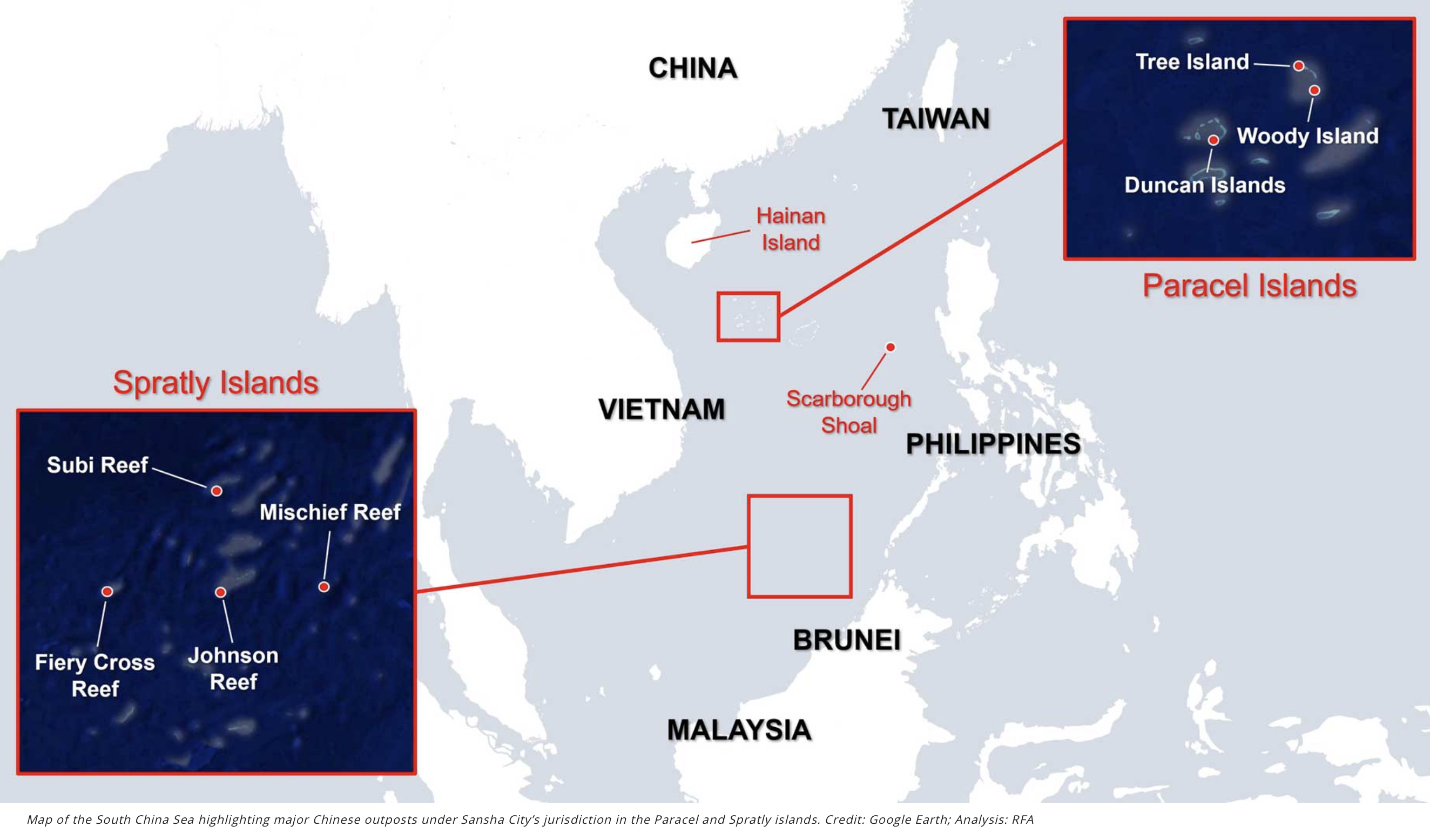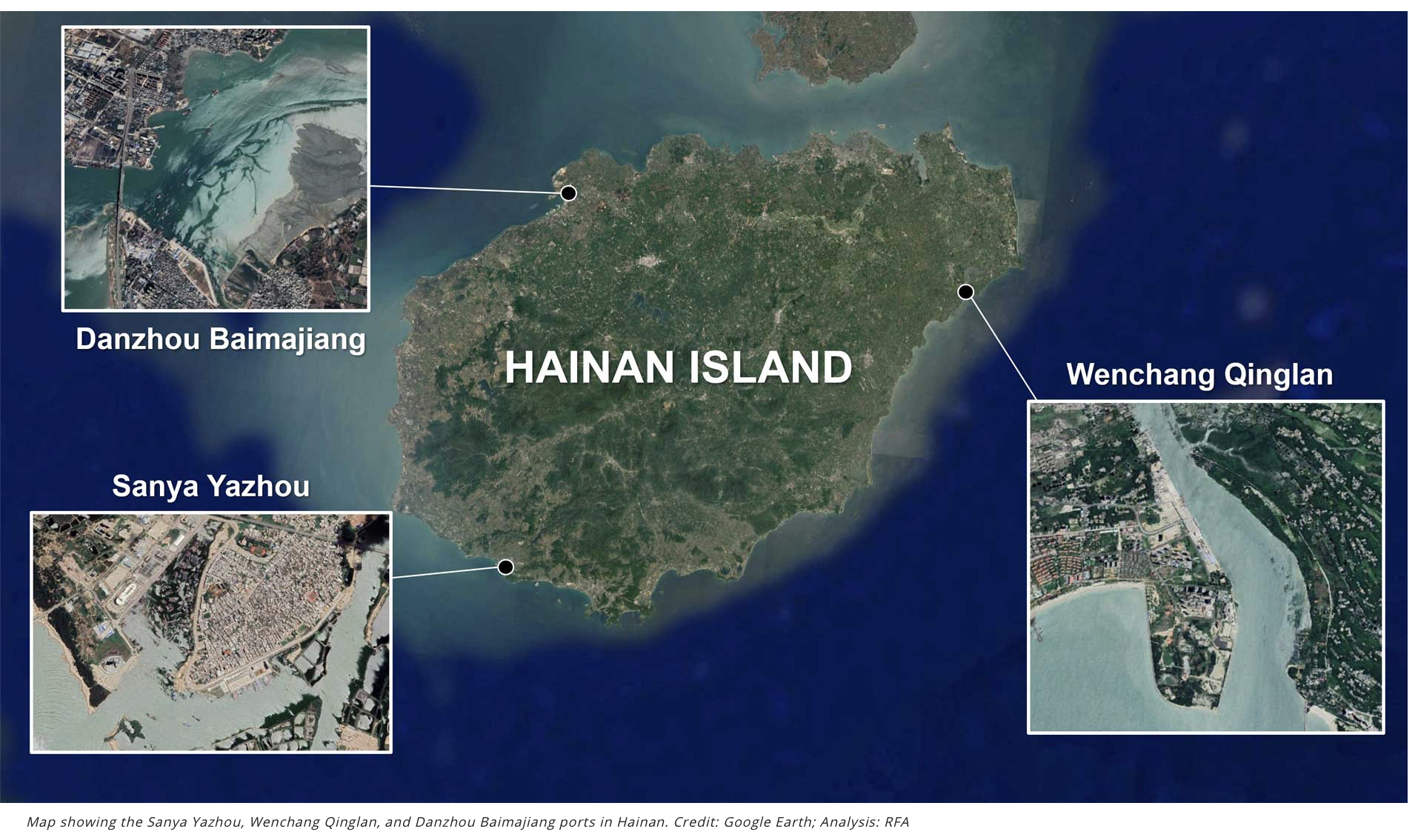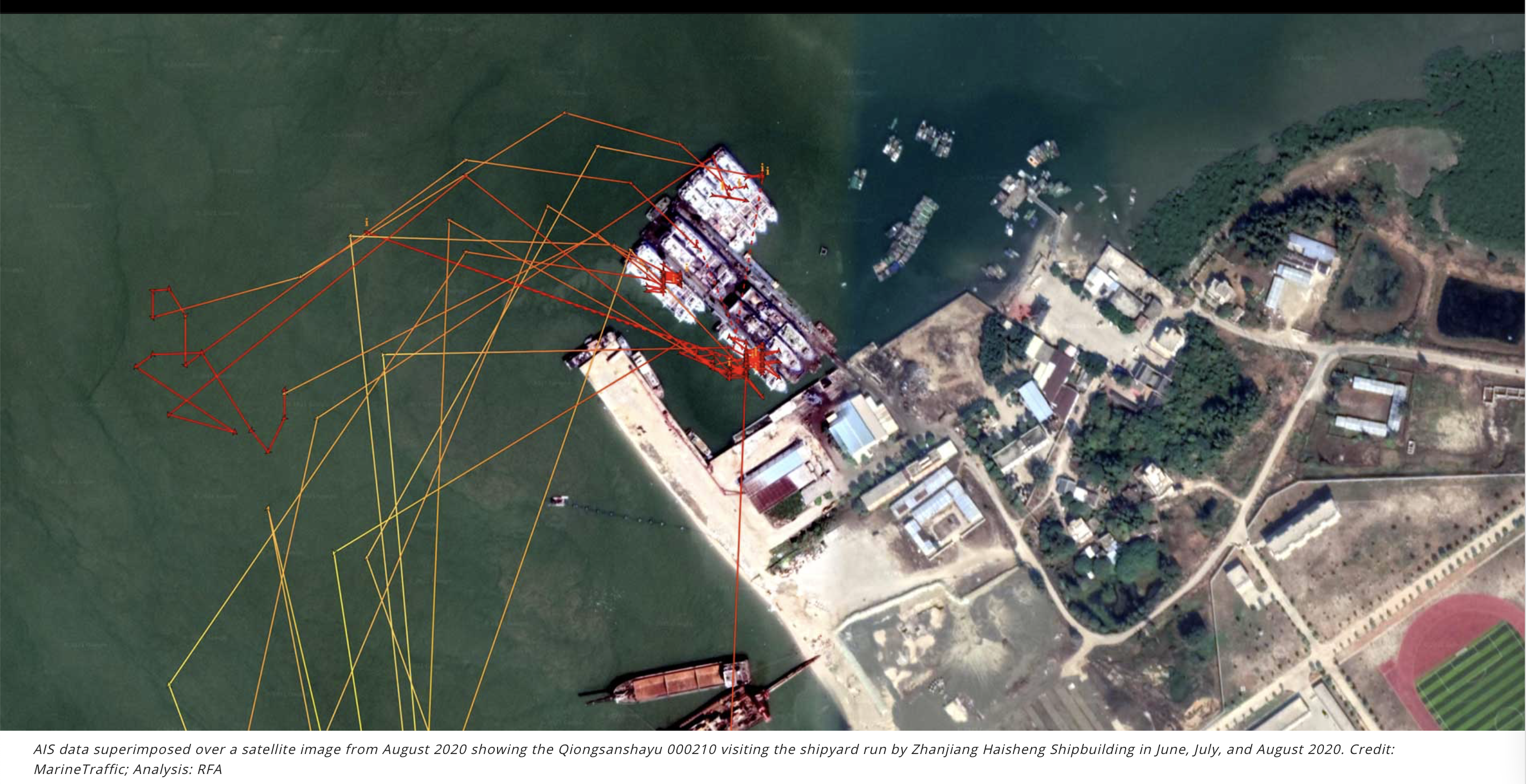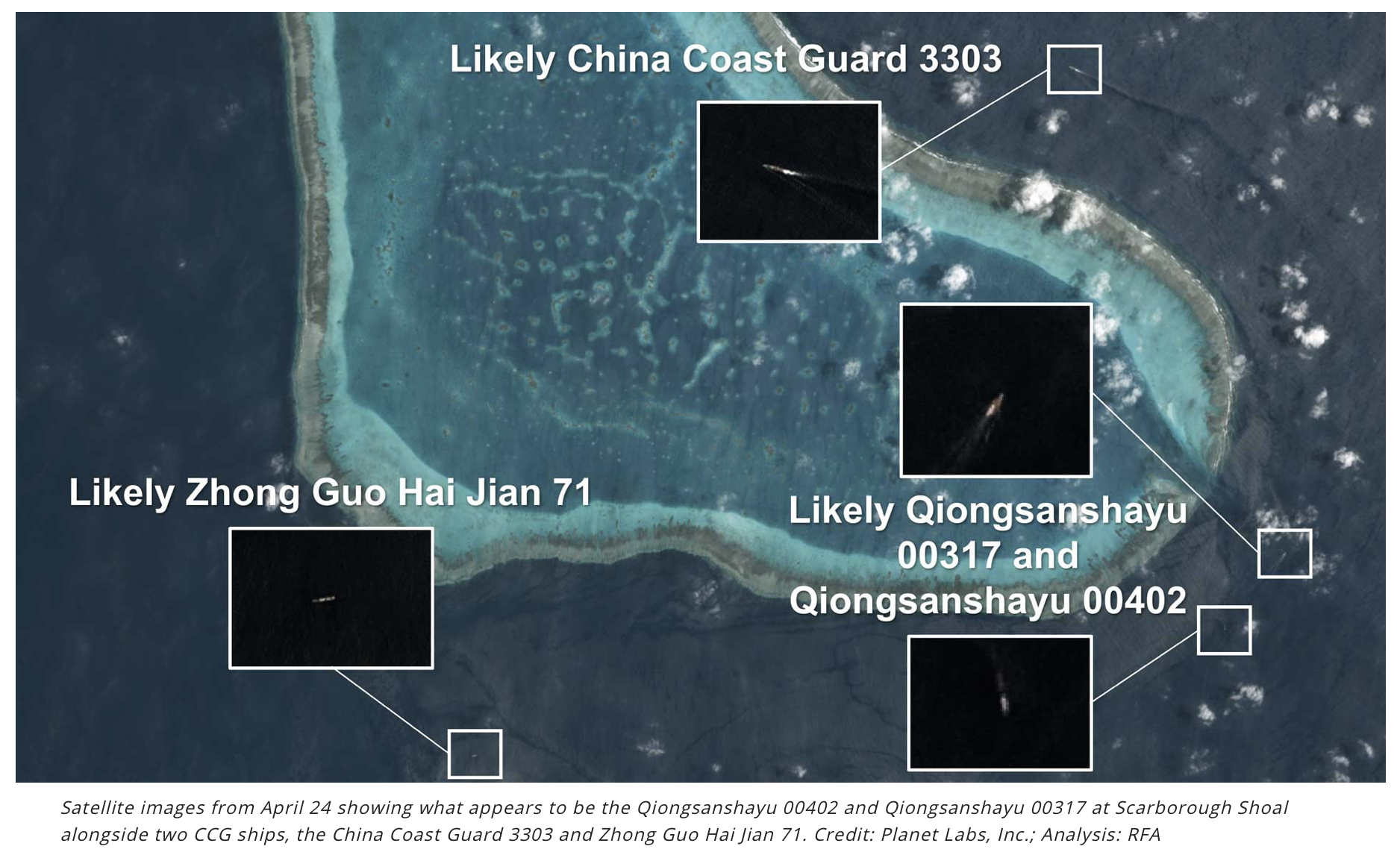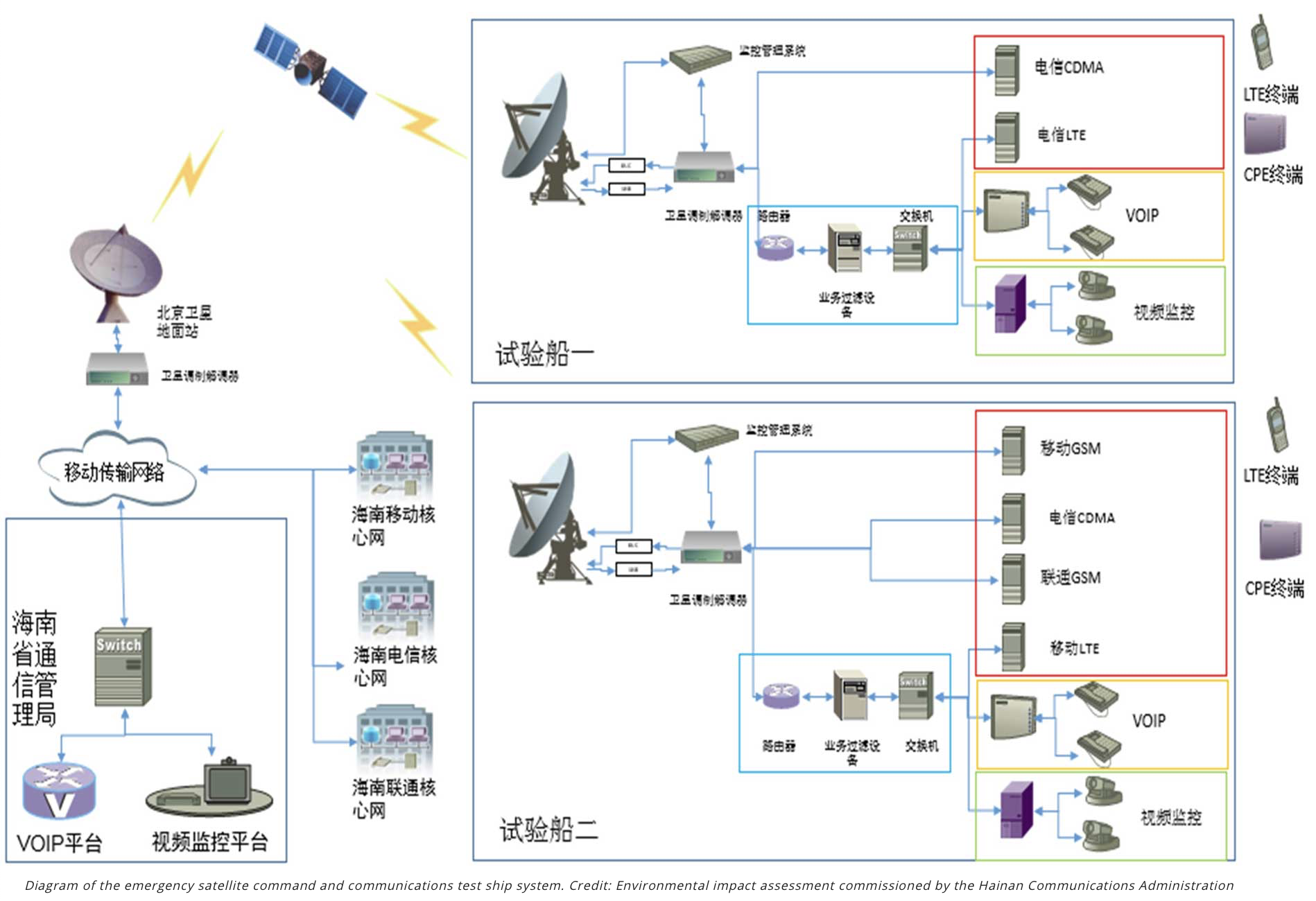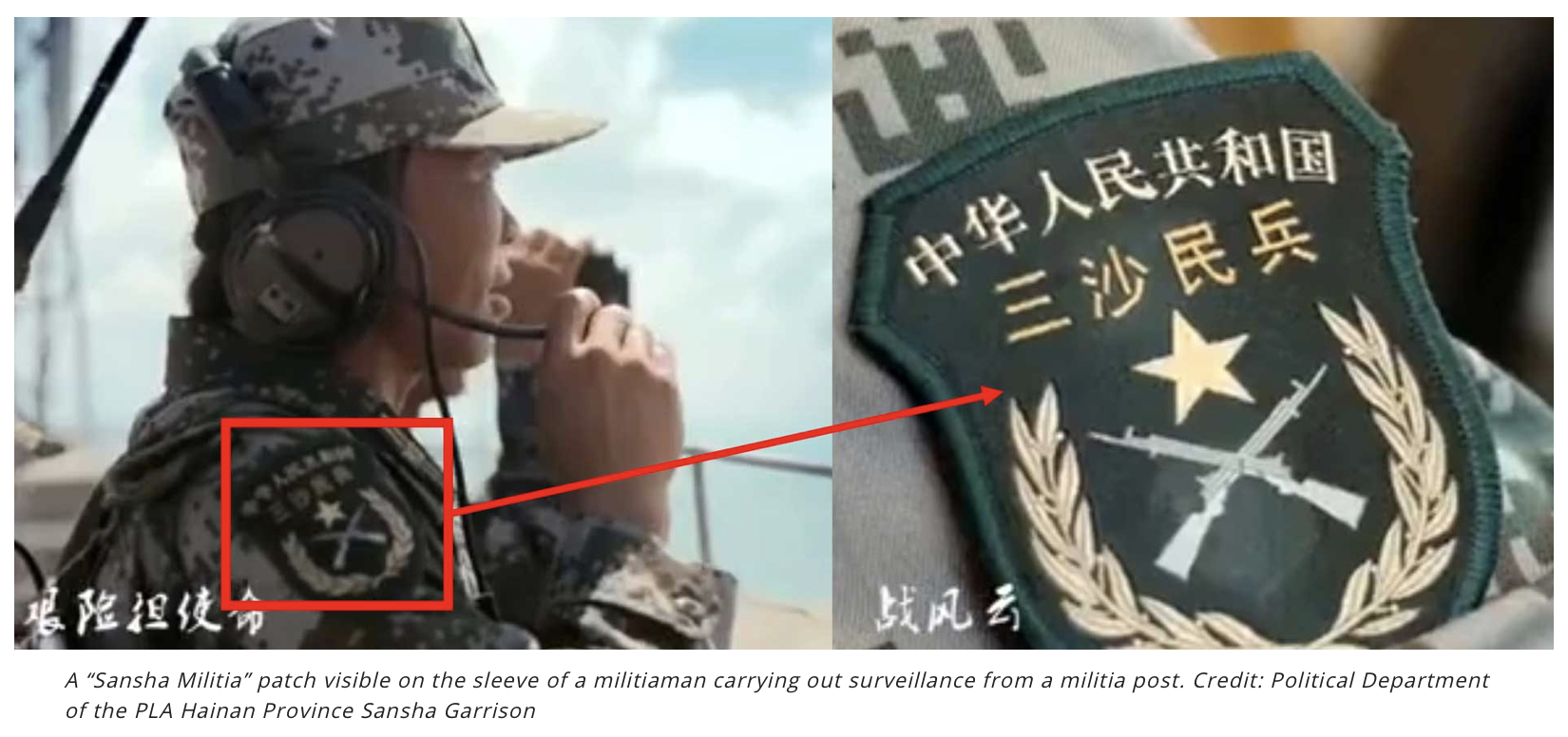In-Depth Multimedia Exposé by Zachary Haver, Radio Free Asia: “Unmasking China’s Maritime Militia”
Zachary Haver, “Unmasking China’s Maritime Militia,” Benar News, 17 May 2021.
China has long denied that it uses maritime militia forces to assert its maritime and territorial claims in the South China Sea, often describing the Chinese vessels clustered around disputed reefs and islets as just fishing boats.
But the paper trail left by the Chinese bureaucracy tells a different story.
Radio Free Asia analyzed bidding documents, corporate records, and other official data in an effort to shed new light on the maritime militia belonging to Sansha City, a municipality under Hainan province that administers China’s claims in the South China Sea from its headquarters on Woody Island in the Paracels.
RFA found that the state-owned fishing company in charge of Sansha City’s maritime militia fleet has managed projects involving classified national security information, a strong indicator that the company’s ships are engaged in more than just fishing.
In addition to tracking the fleet owned by this company, RFA also uncovered evidence that one of its ships was used to test an experimental command and communications system built with foreign technology, which likely transformed the vessel into a mobile communications and surveillance platform capable of transmitting intelligence back to the authorities on land.
And referencing the corporate records of fishermen legally registered in Sansha City against Chinese state media reporting on the city’s militia, RFA further verified that numerous “fishermen” living in Sansha are actually militiamen responsible for guarding China’s outposts.
China’s maritime militia has been in the news. The presence of numerous maritime militia ships at Whitsun Reef in the Spratly Islands in late March set off a diplomatic tussle between Beijing and Manila and prompted widespread international criticism of China, despite its assertion that these were just fishing vessels sheltering from poor weather.
“Recently, some Chinese fishing vessels take shelter near Niu’e Jiao [Whitsun Reef] due to rough sea conditions,” said a spokesperson for the Chinese Embassy in the Philippines. “It has been a normal practice for Chinese fishing vessels to take shelter under such circumstances. There is no Chinese Maritime Militia as alleged,” the spokesperson stated.
But multiple open-source investigations have confirmed the presence of militia vessels near the reef.
Now, RFA is taking a step further to shed light on the true nature of China’s maritime militia, pulling back the curtain on the procurements, fleet, and personnel of this shadowy paramilitary force. … … …
The experimental system on the Qiongsanshayu 00209 even uses foreign satellite technology originating with companies from the United States, South Korea, and Japan, the 2018 environmental impact assessment shows.
The technology includes a KNS-Z12 satellite antenna from KNS Inc., a South Korean company; a POB-KUS100 upconverter from Wavestream, a U.S. company; a NJR2836U low-noise block downconverter from Japan Radio Company, a Japanese company; and a CDD 562AL satellite modem, a CDM 570A/L satellite modem, a CDM 625A satellite modem, and a CRS 170A switch from Comtech EF Data, a U.S. company.
Contracting records show that both Wavestream and Comtech EF Data are U.S. defense contractors, and the website of Comtech EF Data claims that the company has worked on numerous programs for clients like the U.S. Navy, U.S. Army, U.S. Air Force, and U.S. Marines.
That means satellite communications technology from U.S. defense contractors might be supporting the operations of Sansha City’s maritime militia in the South China Sea.
This is not the first time China has obtained foreign technology for use in South China Sea. A recent report by RFA revealed that Sansha City has acquired over $930,000 of foreign hardware, equipment, software, and materials. And in a separate investigation, this reporter found that Sansha’s local maritime law enforcement force is also using satellite communications technology from a U.S. defense contractor.

